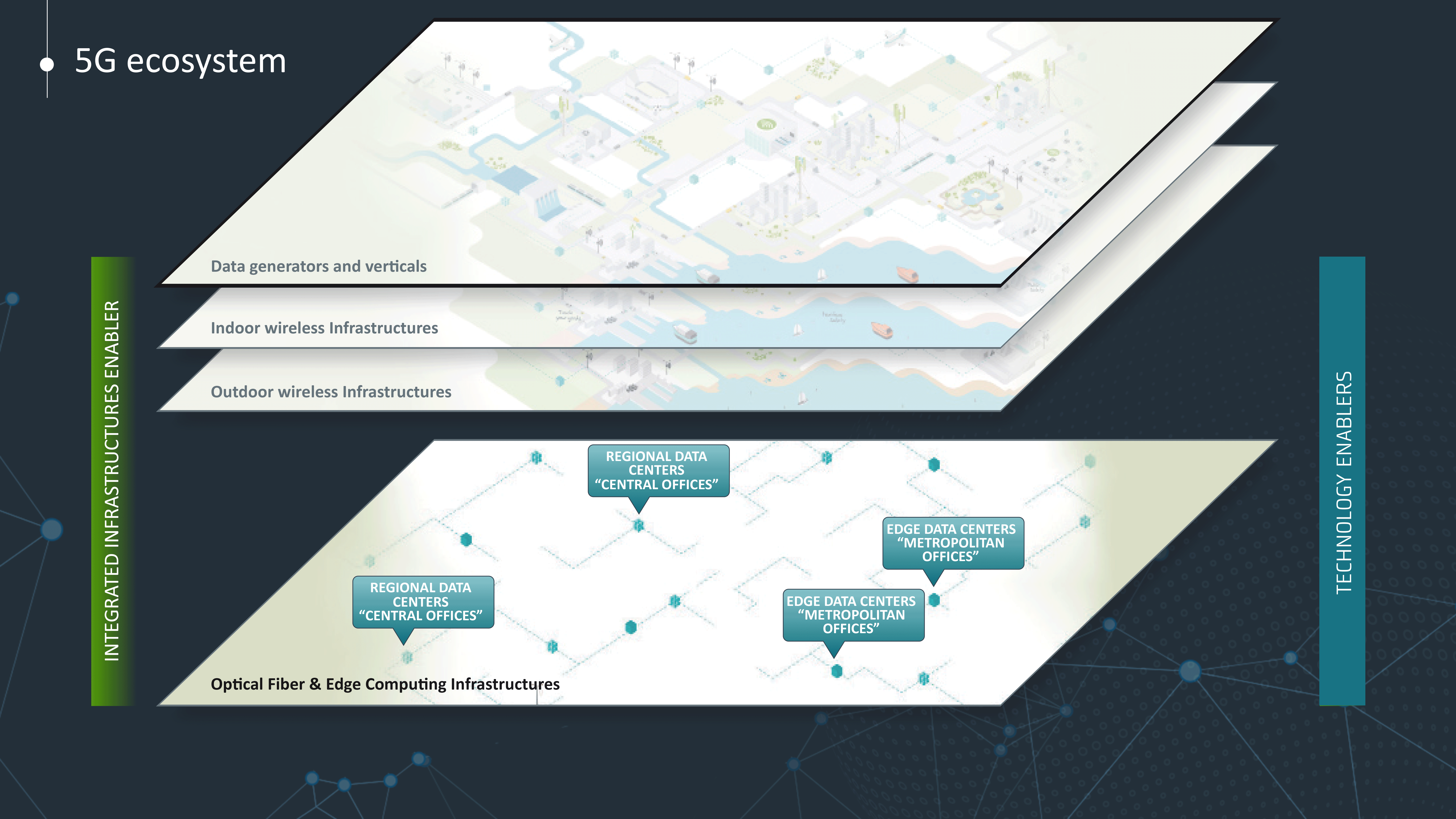Trends
Trends
NOV
10
2020
Technology
The 5G challenge: infrastructures for a new network paradigm
It is often the case that I am asked by relatives or friends, usually people unfamiliar with technological models despite being active users of all kinds of devices and gadgets, about why the transition to 5G is so present on all media. Our society has become used to an exaggerated interpretation of new achievements, products and services offered by the telecom and consumer electronic industries, those sometimes arriving in advance of the real demand.
We all, telecom professionals, know that 5G and its ecosystem should mean so much more than just faster speeds or smarter phones. Networks will be able to support revolutionary use cases where low latency and bandwidth will potentially provide effects on the economy, health and even social development. If we consider connected vehicles as one of the most visible example of that new reality, joined by other developments such as Artificial Intelligence, Virtual and Augmented Realities, should become game changers for our way of life. Why? How? And what do these mean?
An immediate example which comes to my mind is the almost infinite number of possibilities for enriched customer experiences. The priority under 4G was faster connectivity and bandwidth. This could allow a football fan, sitting at his/her beloved stadium, was able to send a HD video or order some food for half time in an indoor environment with tens of thousands of others doing the same. 5G will unlock an even wider range of high quality and immersive applications, based on real-time audio and video. While they enjoy the enriched match experience, his/her vital signs could also be monitored by their smartphone which could send an alarm to the emergency services in case urgent attention is needed. Of course, mission critical communications will be reinforced via independent and private broadband networks.
The value about 5G seems to be clear, as long as the above-mentioned innovative services arrive and transform our lives, both in our personal and professional lives. What isn’t so evident for a large part of the population across Europe is the paramount redesign of the networks involved:
- The RAN (Radio Access Network): 5G is not just all about more spectrum or active antennas. We will only make the most of 5G if we get the necessary level of network densification, where macro and microcells (including the already deployed ‘Small Cells’) will coexist and allow better capillary coverage and bandwidth capacity, reuse frequencies and offload for the macros.
- Indoor coverage: this is not new; improving coverage and capacity in crowded venues, transportation hubs or high-rise buildings has always been a problem the MNOs or the private entities have tried to address. With 5G, indoor coverage will mean the Go/No Go driver and in a healthcare environment, this could mean access to medical records anywhere inside the building from a clinician’s tablet.
- Last Mile connectivity: there is an interesting debate about 5G’s potentiality as a FWA (Fixed Wireless Access) enabling technology, becoming a suitable alternative to FTTH (Fibre to the Home) deployments in some cases. Aside of that point, there is another element in which the general consensus is easy to obtain: that is most of the radio sites (both macro and micro) will need adequate connectivity in order to ensure the expected high throughput per network element.
- Backbone: applications will be processing locally-available data, with Edge Computing at the same time that interrogations towards a numbers of servers in the cloud are launched. Moreover, those same applications will be managing different data sources, including video streaming and other feature rich applications. The whole game changes: we will need new core networks for 5G, which is not a simple evolution. Virtualised, cloud-native or service-oriented concepts are only some of the offerings and definitions that we will get from providers’ proposals.
Public and private debates are inevitable. Fair and affordable availability of street assets, reduction of nuisance due to never-ending fibre digs or control of emissions under the applicable legislation are one just side of the argument; financial efficiency, deadline achievement for the rollout and cost control are the other side.
There are several consequences of this technological revolution: high investments and recurrent costs for the MNOs and companies developing use cases, risk of inefficient allocation of financial resources, impact on the same urban environment of replicated networks with operation and maintenance implication.
Our view at Cellnex Telecom is clear: there is only one path for the success of 5G. Avoiding redundancies in infrastructures and fostering models based on sharing as many network elements as reasonably possible. When we build a digital ecosystem where the real commercial battle among the MNOs is fought around the services and the innovative use cases, the customers will then benefit from the value-added proposals on offer.
The coming three to five years will define how 5G reaches its expectations. Cellnex Telecom have already become a proactive actor in these rollout models, always with our neutral host vision: fair proposals to all MNOs based on streamlined deployments that maximise asset sharing. This will enhance our presence in the 5G infrastructure while we support our main clients in strengthening their own business opportunities. Value creation from an industrial partner, that’s what Cellnex provides.
Alfonso Álvarez
Deputy Managing Director, Cellnex UK

















